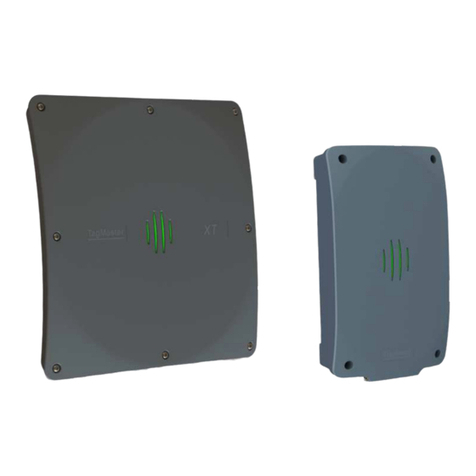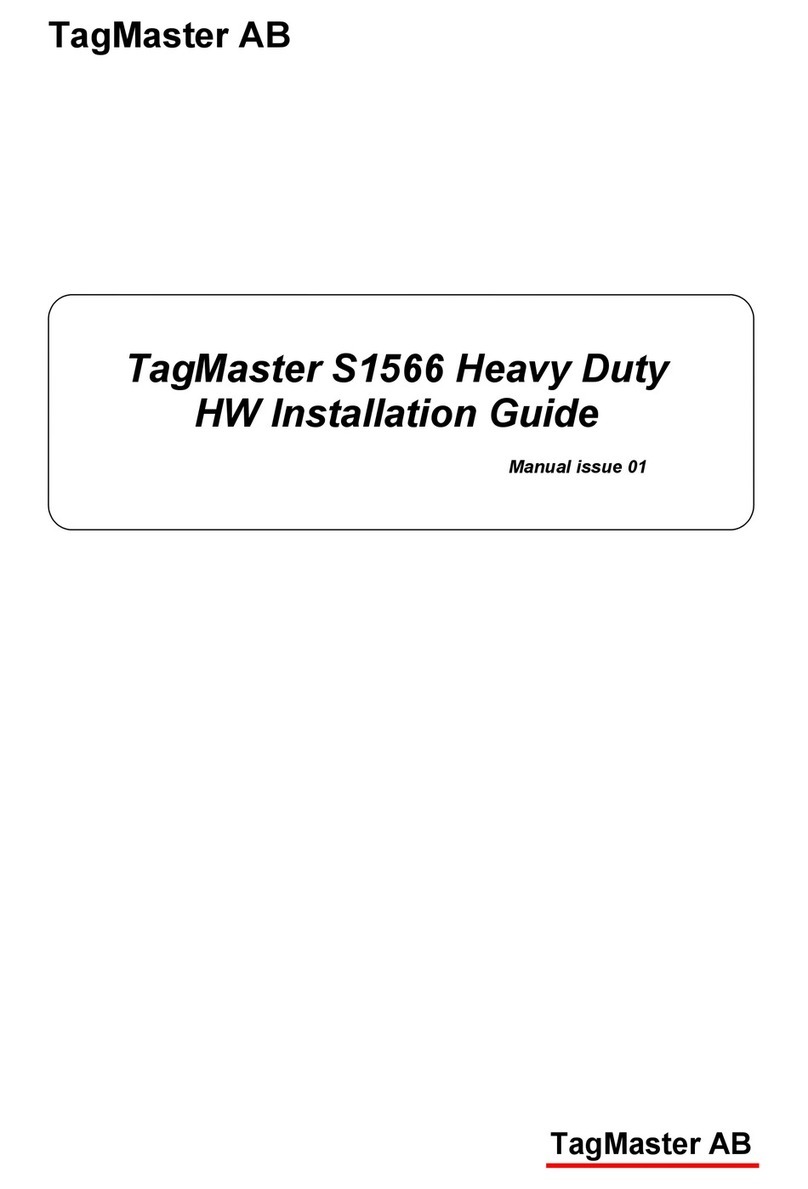XT-2 Reader Installation Manual & Data Sheet Doc no. 10-407 02
© TagMaster 4 (26)
1 Introduction
1.1 XT-2 Reader
The XT-2 RFID reader is a full functionality EPC Gen 2 (ISO 18000-6C) reader for
access installations such as Parking, Gated Communities and Condominiums. The
reader is available in two models: XT-2 eu for the European market (865.6-867.6 MHz)
and XT-2 us for the US market (902-928 MHz). The reader has a built-in antenna and
can be expanded with an optional external antenna. The read range is five meters for
XT-2 eu and six meters for XT-2 us.
XT-2 supports the TagMaster SecureMarkIDTM acquisition system developed to ensure
that each tag has a truly unique identity impossible to duplicate. The XT-2 Reader can
be equipped with all TagMaster reader application software providing suitable
functionality. Customer specific applications can be developed using TagMaster’s
Software Development Kit (SDK).
The reader can be configured and controlled via the Ethernet interface, either locally or
remotely via an Internet connection. The XT-2 Reader supports several standard
interfaces including Ethernet (TCP/IP), RS232, RS485 and Wiegand/Mag-stripe.
More detailed information about the reader’s functionality is available in 06-118, “GEN4
Reader User’s Manual”.
1.2 TagMaster’s RFID System
TagMaster’s RFID system consists of readers and ID-tags. Readers can work
standalone or be connected to a host computer using serial or Ethernet interfaces.
1.2.1 Reader
The reader is a device for reading ID-tags using radio frequency. Some readers have
the capability to write information to ID-tags that support this.
The reader has a built-in antenna for communication with ID-tags. Some readers can
be expanded with external antennas. The reader also has various interfaces for
communication with a host computer and other external devices. When an acceptable
ID-tag is read, the reader can for example pull a relay connected to a barrier and grant
access to a vehicle and at the same time sound the buzzer and flash the visible
indicator.
To reduce the risk of interference, several readers in close proximity to each other
should use frequency hopping or be set to different frequency channels.
1.2.2 ID-tags
An ID-tag carries information that can be read at a long distance using radio frequency.
TagMaster has a range of ID-tags with different properties. Technical data for the
different ID-tags are presented in the respective ID-tag’s data sheet.






























